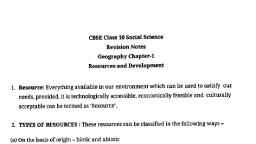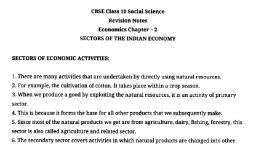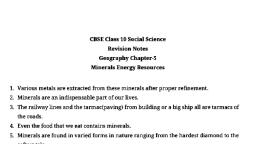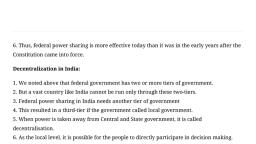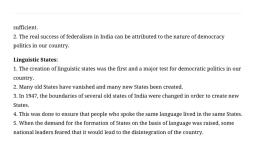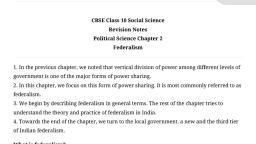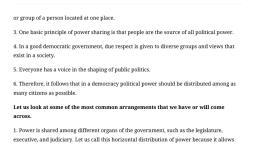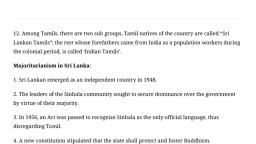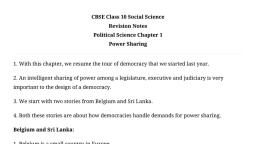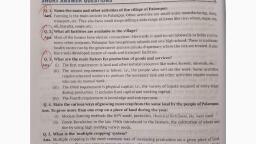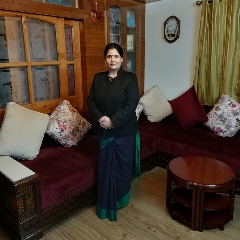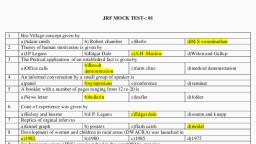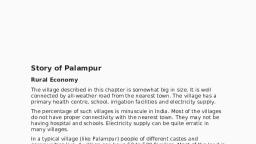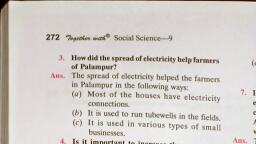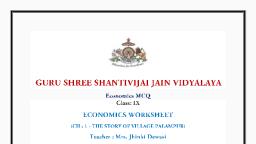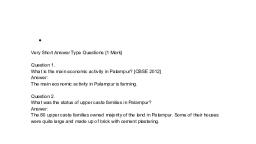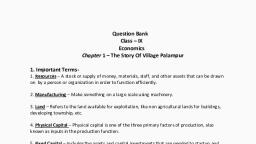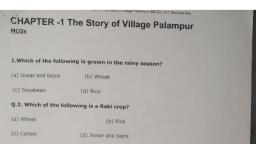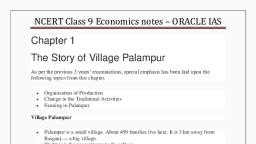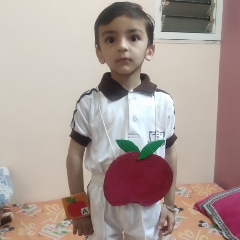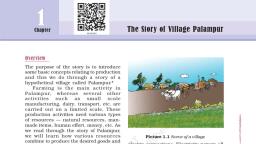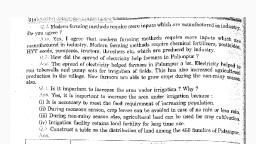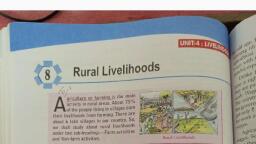Page 1 :
CBSE Class 09 Social Science, Revision Notes, Economics Chapter 2, The Story of Village Palampur, , • Village Palampur, , Palampur is a small hypothetical village having about 450 families. It is 3 km away from, Raiganj -big village. Shahpur is the nearest town to the village., The village is well connected with neighbouring villages and towns.The village is well, connected by the road and most of the houses are electrified., It has two primary schools and one high school., There is a government primary health Centre and a primary dispensary., • Main Production Activities, , Farming is the main production activity in the village Palampur. Most of the people are, dependent on farming for their livelihood. Non-farming activities such as dairy, small-scale, manufacturing (e.g. activities of weavers and potters, etc.), transport, etc., are carried out on, a limited scale., • Factors of Production (Or Requirements for Production of Goods and Services), , Land, labour and capital are the basic requirements for production of goods and services, which are popularly known as factors of production. Land includes all free gifts of, nature,e.g., soil, water, forests, minerals, etc. Labour means human effort which of course, includes physical as well as mental labour. Physical capital is the third requirement for, production.Physical capital includes fixed capital (e.g. tools, machines, building, etc.), Working capital includes raw materials such as seeds for the farmer, yarn for the weaver., and money in hand., • Important Changes in Farm Activities
Page 2 :
Land area under cultivation is virtually fixed. However, some wastelands in India had been, converted into cultivable land after 1960., Over the years, there have been important changes in the way of farming, which have, allowed the farmers to produce more crops from the same amount of land., These changes include :, (a) Multiple cropping farming, (b) Use of modern farming methods., Due to these changes (in the late 1960s) productivity of land has increased substantially, which is known as Green Revolution. Farmers of Punjab, Haryana and western Uttar, Pradesh were the first to try out the modern farming methods in India., Overuse of fertilizers, pesticides and water is resulting into land degradation. The farmers in, Punjab are facing these problems., • Labour : After land, labour is the next basic factor of production. Small farmers, , provide their own labour, whereas medium and large farmers make use of hired, labour to work on their fields., • There are many landless families in Palampur which provide labours. As the work is, less for the number of labourers they are not given minimum wages set by the, government., • So some labourers migrate to the cities., • Capital: After land and labour, capital is another basic factor of production. t-.-., , 2, , categories of farmers (e.g. small, medium and large) require capital. Small farmers, borrow from large farmers or the village moneylenders or the traders who supply, them various inputs for cultivation., Modern farming requires a great deal of capital., • Sale of Surplus Farm Products, , Farmers produce crops on their lands by using the three factors of production, viz. land,, labour and capital. They retain a part of produce for self-consumption and sell the surplus in, the nearby market. That part of farm produce which is sold in the market is called
Page 3 :
marketable surplus. Small farmers have little surplus output. It is the medium and large, farmers only who have substantial surplus produce for selling in the market., , • Non-farm activities, Out of every 100 workers in the rural areas in India, only 24 are engaged in non-farm, activities. There is a variety of non-farm activities in the villages. Dairy, small scale, manufacturing, transport, etc., fall under this category.



